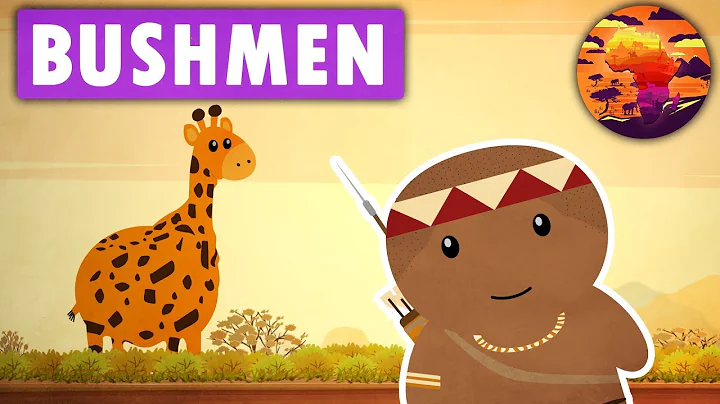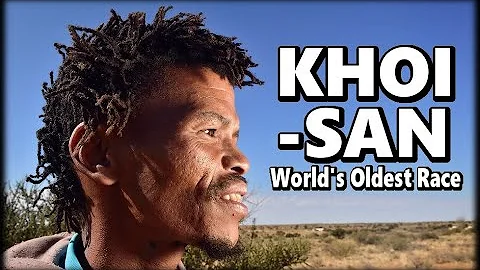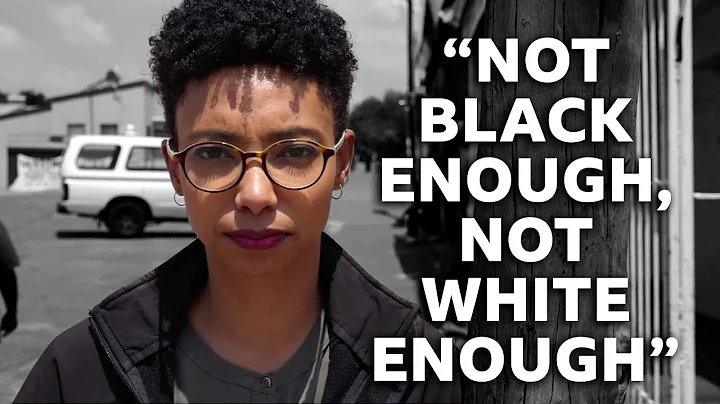- 1. Colorful Black Africa
Africa south of the Sahara Desert is also called Black Africa because most of the population belongs to the black race. But in fact, there are more than just black people in black Africa: in southern Africa, there are San people living in South Africa, Namibia, and other places. The San people have yellow-red skin, short stature, slender eyes, high cheekbones, and Black people are very different. Former South African President Mandela had San ancestry. The residents of Madagascar, an African island country, look like yellow people, but their skin color is slightly darker. They are a mixture of ancient immigrants from Southeast Asia and local indigenous people. There are also Pygmies , the shortest race in the world. Although he also has dark skin, he is significantly different from black people in terms of genes and language.
The black race is also divided into hundreds of different ethnic groups. Roughly divided, they can be classified into three types: Hamites, Nilots, and Bantu. The Hamites, mainly in areas north of the equator such as Ethiopia, Sudan, etc., have a certain amount of European ancestry. They have high noses, deep eyes, and lighter skin. Most of the Miss Africa beauty pageant winners are Hamites.

Picture above_ The Nilot people in Africa in 1876 were distributed in the middle and upper reaches of the Nile River . They were tall and good at long-distance running. The average height of men was 1.8 meters. Among them, the famous Maasai people are brave and tough, and are famous for hunting lions.
Among black people, the largest population is the Bantu. The Bantu population is about 300 million, accounting for more than one-third of Africa's total population. They are widely distributed in African countries within the Sahara Desert. The main ethnic groups in Tanzania , Kenya , Congo , Uganda , Rwanda , Zimbabwe , Zambia and other countries are all Bantu people. Bantu people have wide noses, thick lips, curly hair, and protruding jaws. They are the familiar image of black people.

Pictured above_ Bantu people
- 2. What is " Bantu "?
The word "Bantu" for Bantu people means people. Although there are many branches of the Bantu people, their languages vary. But there are many similarities.
Take the word "people" as an example. In the language of the Baganggo people in West Africa, the singular is Muntu and the plural is Bantu. In the Pangwahili language on the Indian Ocean coast of East Africa, the singular is Mtu and the plural is Bantu. Watu; in the Mongo language of the equatorial rainforest, "people" are Moto (singular) and Bantu (plural), while in the Ksa language of South Africa, they are Umntu (singular) and Bantu (plural). In the 19th century, the British scholar W. Brick collectively referred to these related ethnic groups as the Bantu.

Above picture_ Congo River basin
- 3. The Great Bantu Migration
Black Africa has so many "Bantu", where did the Bantu come from? At present, there is no conclusion in the academic circles. One theory is that it comes from the border area of Nigeria and Cameroon in Africa. One theory is that it comes from the vast forests and grasslands of the Congo River Basin. All in all, somewhere north of the middle of the equator. About 2,000 years ago, the Bantu people migrated from their hometown and spread outwards. Finally, around the 15th century, they occupied most of the African continent.
Bantu migration tracks include east, south and west. The east-route migrating army encountered the Hamites and Nilots in the Great Lakes region (i.e., Lake Victoria , Lake Tanganyika , and Lake Kivu basin in central Africa). Some Bantu people stayed and mixed with the Hamites and Nilotes, giving birth to the Baganda, Kamba, Gikuyu and other ethnic groups. Among them, the Baganda once established a powerful feudal They are the ancestors of today's Ugandans. The Bantu people who continued to move eastward reached the shore of the Indian Ocean , and came into contact with Arab, Persian, and Indian civilizations through sea routes, and became the Swahili people. Now Swahili is the most widely spoken native language in Africa, with more than 70 million speakers.

Pictured above_ The migration of the Bantu people
The southern migration experienced three climaxes, spreading and growing along the way, and successively occupied today's Malawi, Zambia, Mozambique, Zimbabwe, South Africa, and finally reached Africa. The southernmost part of the country forms the Zulu people, the main ethnic group of black people in South Africa.
The Bantu people who migrated westward, in the process of mixing with local ethnic groups, occupied a vast area from southern Cameroon in the north to northern Namibia in the south. From east to west, the areas inhabited by the Western Bantu range from inland to coastal areas. The civilization of the West Bantu people in the interior is relatively backward, while the civilization of the coastal people is relatively advanced. They have successively established civilized countries, including Kuba, Lunda, Luba, Congo, etc.

Above picture_ iron sword used by Congolese noble heavy infantry
- 4. Why did the Bantu people migrate?
There are different opinions on the reasons for the migration of Bantu people. Here is an introduction to the mainstream arguments.
More than three thousand years ago, the environment in Africa was very different from what it is now. At that time, the current Sahara region still had a pleasant climate and large rivers. It was the home of the black people. The Bantu was the southern branch of the group, making a living from agricultural production and fishing. In the current black African region, the Pygmies live in the forests and the San people dominate the grasslands.
Around the first millennium BC, things changed. The climate is becoming drier and desertification is intensifying in the Saharan region. The Bantu's northern neighbors, the Nilots, began to move southward, squeezing the Bantu's living space.
At the same time, as the Bantu people mastered iron-making technology, productivity was greatly improved, and bananas and potatoes were widely planted. The development of productivity has also led to a surge in population. In order to relieve the pressure of survival, the Bantu people began to leave their homes and began to conquer Africa.
The Bantu people mastered the use of iron tools and entered the stage of agricultural civilization, which was more advanced than the San and Pygmies who were in primitive society and used stone tools. Soon they occupied the territory of the San and Pygmies and became the overlord of Africa.

Picture above_ Botswana San people's thousand-year rock paintings
When European colonists studied the history of Africa, they once described the Great Migration of the Bantu people as a military conquest similar to the Mongolian Western Expedition. The tall and burly Bantu people used advanced iron weapons to kill a large number of Sans and Pygmies, expelled the survivors to the deep mountains and forests, and occupied their original homes. Behind this theory actually contains the exaggerated gangster logic of imperialism. Since the advanced Bantu people conquered the backward San and Pygmies back then, then the more advanced white people now should also conquer and dominate the backward black people.
In fact, the migration and spread of the Bantu people was a slow process that lasted nearly a thousand years, and the African continent is vast and sparsely populated. The migration of the Bantu people was not a sudden military invasion, but a gradual infiltration of immigrants. During the infiltration process, although there were sporadic armed conflicts with indigenous tribes, it was more about assimilation and peaceful competition.

Picture above_ Modern Bantu people
- 5. The significance of the Great Migration of the Bantu people
The Great Migration of the Bantu people is a major event in the history of human civilization. It established the basic pattern of the ethnic groups in sub-Saharan Africa today and made it a real "Black Africa". It spread iron smelting, pottery making, and farming techniques to most of the African continent, thus contributing to the emergence of Africa's unique civilization.
Before the invasion of Western colonists, the Bantu people in black Africa established civilized countries such as the Kingdom of Congo, Kingdom of Uganda, Kingdom of Rwanda, Kingdom of Burundi, Mtapa Empire, etc. They are all unique treasures in the history of human civilization.
Author: big lion correction/editor: Lilise
reference materials:
[1] "African General History • Ancient Volume" He Fangchuan, Ning Sao East China Normal University Press 1995
[2] "Origin" Ge Gongshang, West Asia and Africa 1981.6
[3] "A Preliminary Study on the Origin of African Nations" Gu Zhangyi, West Asia and Africa 1981.6
The text is created by the team of the History University Hall, and the illustrations are from the Internet. The copyright belongs to the original author




















![[WATCH] ANC SECRETARY-GENERAL LEADS DELEGATION TO HIGH COURT IN MANGAUNG #VoteANC2024 #LetsDoMore… - DayDayNews](https://i.ytimg.com/vi/EnKq8Y69Ssw/hq720.jpg?sqp=-oaymwEcCNAFEJQDSFXyq4qpAw4IARUAAIhCGAFwAcABBg==&rs=AOn4CLAoaP1f7BO65rzPFj_iVHQcGOcI-g)
